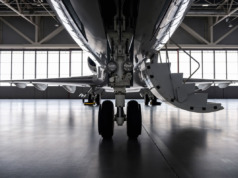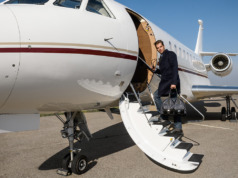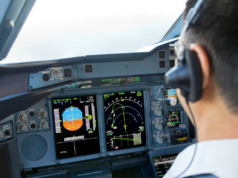
Aircraft owners and executives directly contribute to aviation risks. They do it day-to-day, flight-by-flight. They do it actively, passively, overtly, and through neglect.
As a result, the quality of business aviation safety has no correlation to the size or quality of the company or family office. It directly correlates to safety leadership. And that starts at the top.
The most common executive failure is to assume that trip safety is the sole responsibility of their aviation professionals. But aviation safety starts with you, the executive leader. With effective executive leadership, business aviation safety can be twice as good as it is today. The business aviation accident rate can be cut in half.
Eighty percent of professionally flown aircraft accidents can be traced to “human error.” According to data from the FAA and the National Transportation Safety Board, during the past 20 years, more than 60% of fatalities have had three causes:
- Loss of Control-Inflight (LOC-I): 27%
- Controlled Flight Into Terrain (CFIT): 22%
- Runway Excursions (RE): 12%
LOC-I and RE have the potential for getting worse in the short term, while CFIT has declined due to technology improvements.
Taking the following three steps will make a dramatic impact on the safety performance of your business aviation operations: declare, lead, and verify.
Declare Your Commitment to Safety Excellence
Many executives assume, “If we’ve not had an accident, we must be safe.” Not so. Safety is not an “either/or” but lies along a continuum. It is up to you to define and declare your intended level of aviation safety. Most passengers, as well as aircraft owners, prefer that their aviation department operate to the highest level of safety.
Executives’ approach to business aviation safety can be quite variable. Examples, from terrible to terrific, are:
- “If you won’t do it, why do I have a jet?” – An owner’s response to a crew’s stated reluctance to extend an unplanned duty day beyond 14 hours.
- “We have some of the best pilots in the business. Time and again they’ve taken me through some of the worst weather you can imagine.” – Oh, really? Was that weather unavoidable? What other safety corners are they cutting?
- “Prior to each departure I shake my pilots’ hands and ask how they and their families are doing. As much as I care about them, I am actually assessing their readiness for the trip.” – An executive explaining why he takes a personal interest in his crewmembers.
Your aviation operation’s level of safety readiness and operations fall into five categories:
- World Class – Anticipatory identification and mitigation of all risks. This level requires a substantial budget, as well as a willingness to accept occasional inconvenience for safety’s sake.
- Best Practices – Proactive identification and mitigation of probable risks. This level typically is seen as the “best bang for the buck.”
- Standard Practices – Attempted prevention of failure through compliance with regulations and policies. Often mistaken for “Best Practices.”
- Substandard Practices – Acceptance of modest risks, often to improve service. May include extension of duty hours, expediting departures and landings, etc.
- Unacceptable Practices – Deliberately incurring significant risks. This rarely is a chronic situation, but most often happens as a direct trade-off for passenger service and convenience.
Your first responsibility, as an executive and the safety leader, is to declare which of these levels of safety you expect from every facet of your aviation operation: flight, maintenance, and scheduling.
Be a Safety Leader
Great leadership is not easy. It requires:
- Foresight, to ensure the success of your aviation team. You must declare and commit to your standards, policies, and practices.
- Discipline, to consistently demand and support adherence to those standards, even under the pressures of time, dollars, and challenging passengers.
- Allocation of sufficient resources needed for success: staffing, training, systems, and technology.
Leadership always requires understanding when the aviation services department should behave like the core company and when it should not. For instance, one of the biggest sources of corporate success is also one of the most insidious threats to aviation safety: doing more with less. The highest safety standards require specific staffing, time, and dollars. To inappropriately demand more output or to reduce access to those key resources significantly raises safety risks. To do so even once sets a new, lower standard. It is imperative to maintain a constant match between mouth and movement when it comes to safety.
As a safety leader, you can ensure the mitigation of the greatest risks. For instance:
- Loss of Control-Inflight occurs when crewmembers don’t respond effectively to an abnormal flight condition. That response requires specific training and practice. Most military pilots get it, but unfortunately, many civilian pilots do not. Simulator training is not enough. Experiential training is best. Demand that your crews are trained and current in “upset recovery” procedures and techniques. Your life, and the lives of your passengers, depend on it.
- Controlled Flight Into Terrain is diminishing as a source of accidents due to greatly improved technology. Make certain your aircraft is equipped with Enhanced Ground Proximity Warning Systems. Synthetic Vision and Enhanced Vision systems are even better. If you frequently operate in challenging weather conditions and at night, especially at a wide variety of airports, these technologies greatly reduce risks.
- Runway Excursions can occur during takeoff or landing. On takeoff, these happen most often when the aircraft is not performing properly and the crew is slow to abort the departure. Landing runway excursions usually occur when the crew lands too fast, too far down the runway, or with too much tailwind.
Countermeasures for both are very straightforward: Crews must train aggressively to recognize when to abort a takeoff or landing and practice those procedures to a high level of competence. The single best procedure for avoiding an RE on landing is to always conduct a Stabilized Approach. This means that during the last minute or more of the approach, the aircraft is on course, on glide path, on speed, and in the landing configuration. Any variance significantly raises the risk of the aircraft going off the runway.
Verify That Your Team Is Doing It Right
As a leader, you have both the opportunity and responsibility to verify aviation safety performance. Don’t just sit down, buckle up, and shut up. You can reinforce your crew’s professionalism. Let your crew know you’re paying attention. Research shows that people perform to a higher standard when they believe they’re being observed. That impact deepens when the observers are knowledgeable and attentive. Obvious examples include :
- Maintaining a professional demeanor and pace.
- The routine and comprehensive use of checklists.
- Adherence to Sterile Cockpit procedures, which require pilots to refrain from non-essential activities during critical phases of flight, normally below 10,000 feet. Mandated by FAA regulations for commercial flights, it is highly recommended for all.
- Consistent adherence to Stabilized Approach procedures.
The single biggest opportunity to improve safety lies with you, the owner and executive. Declare, lead, and verify your aviation operation’s adherence to the highest standards of safety. BAA
Pete Agur, Jr. is chairman/founder of The VanAllen Group, a management consulting firm specializing in the business of business aviation. With an MBA and a BS in Aeronautical Sciences, he is an NBAA Certified Aviation Manager.




